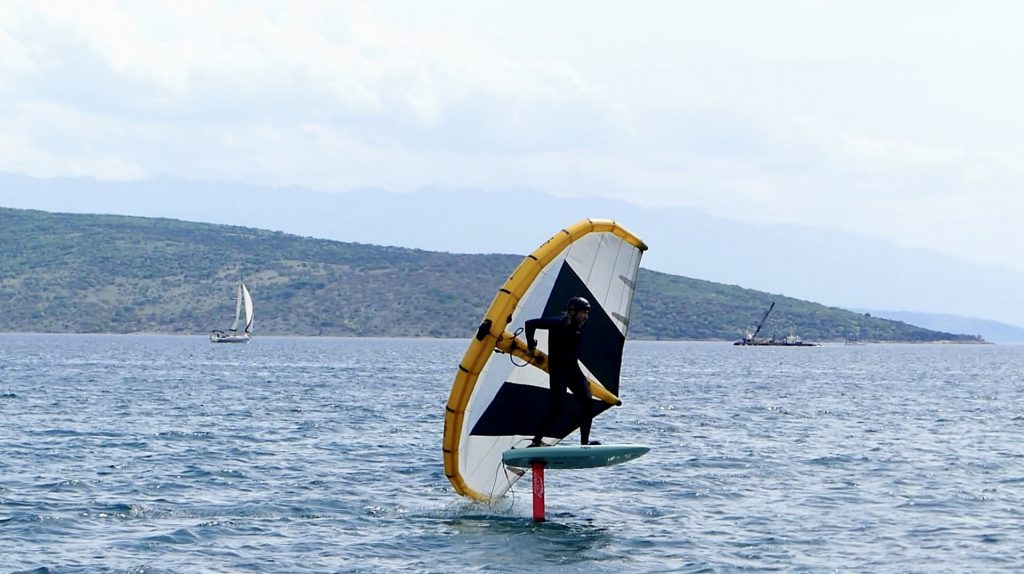We explain the wingpass jibe. In this variation, the wing is turned behind your back. It sounds complicated, but it’s not at all and looks pretty stylish. We’ll guide you step by step.
Prerequisite
Can you ride switch confidently and have you mastered the Duke Jibe? Then it’s time to tackle the Wingpass Jibe.
Your first attempts should be in the lower wind range of your setup. It’s probably easiest with a 4 m² wing or smaller. A 5 m² wing is also no problem, but it’s just not quite as maneuverable.
Approach
The approach is done in the switch. The wing leash is on the front hand. Before going into the wing pass jibe, you need to prepare for the maneuver. Wrap the wing leash around your body so that it runs from the wing over your back, around your body, and to your wrist. This is important so that the leash is not wrapped around your neck after the wing pass jibe.
Reverse the grip of your rear hand so that your fingertips are above the handle.
Wingpass Jibe
Initiate the wing pass jibe like a normal jibe. Release your front hand as you would for a duck jibe when you have completed about a quarter of the 180° turn. Your back hand remains at the same height as before. When you release your front hand, the wing will fall down with the front tube leading. Continue the turn consistently. Let the wing swing sideways behind you on the side of your back hand. Reach behind your back with your free hand and grab the front handle, pulling the wing forward and past you. Your rear hand will naturally let go. You should now have completed about ¾ of the 180° turn. Your newly free hand now grabs the front handle. Your other hand lets go and moves to the rear handle. You have now completed the change of direction in style.
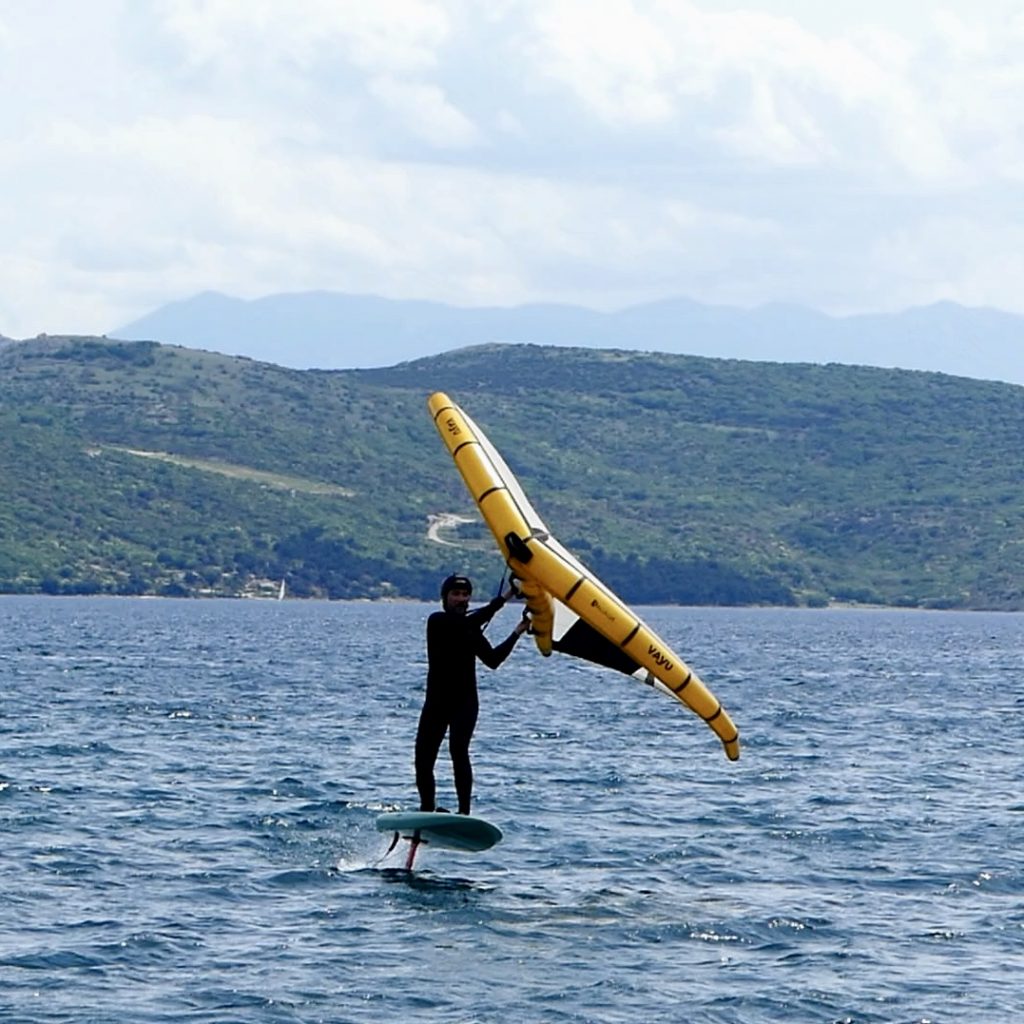
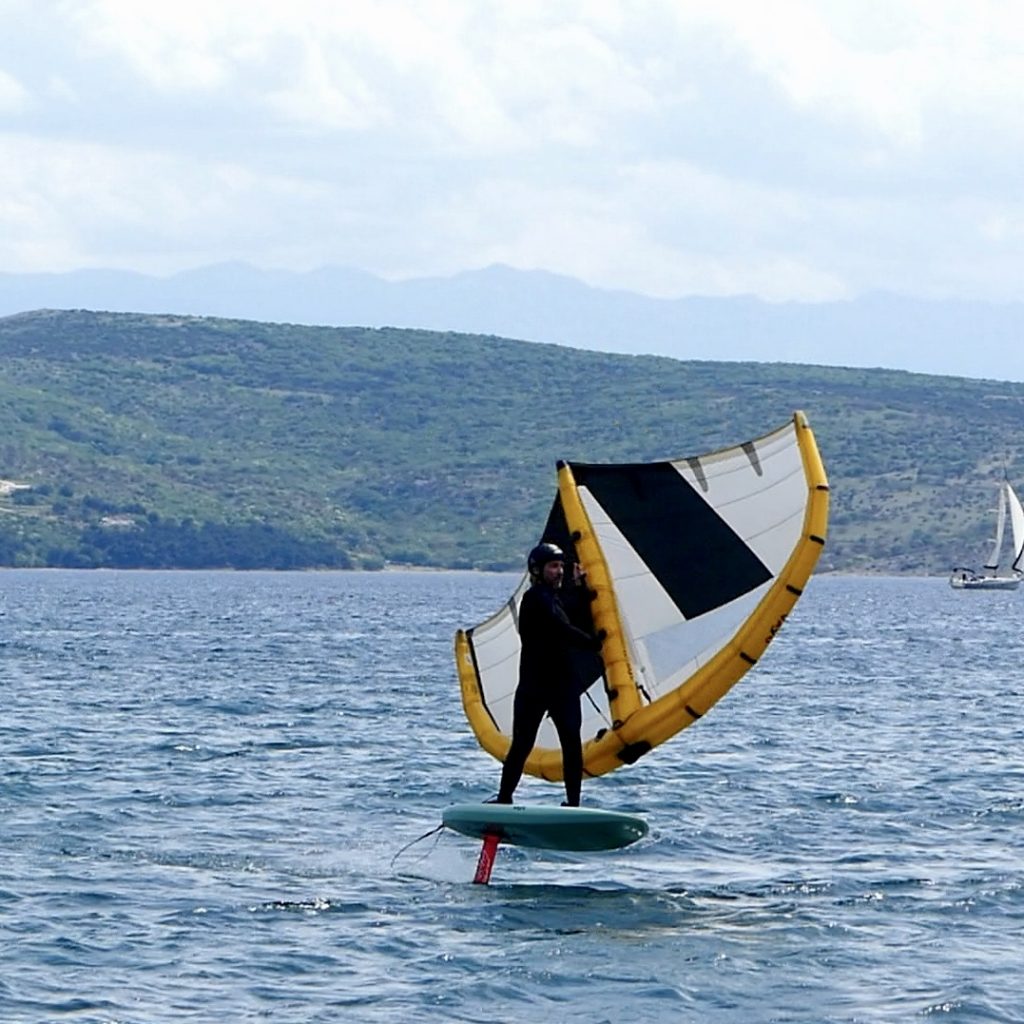
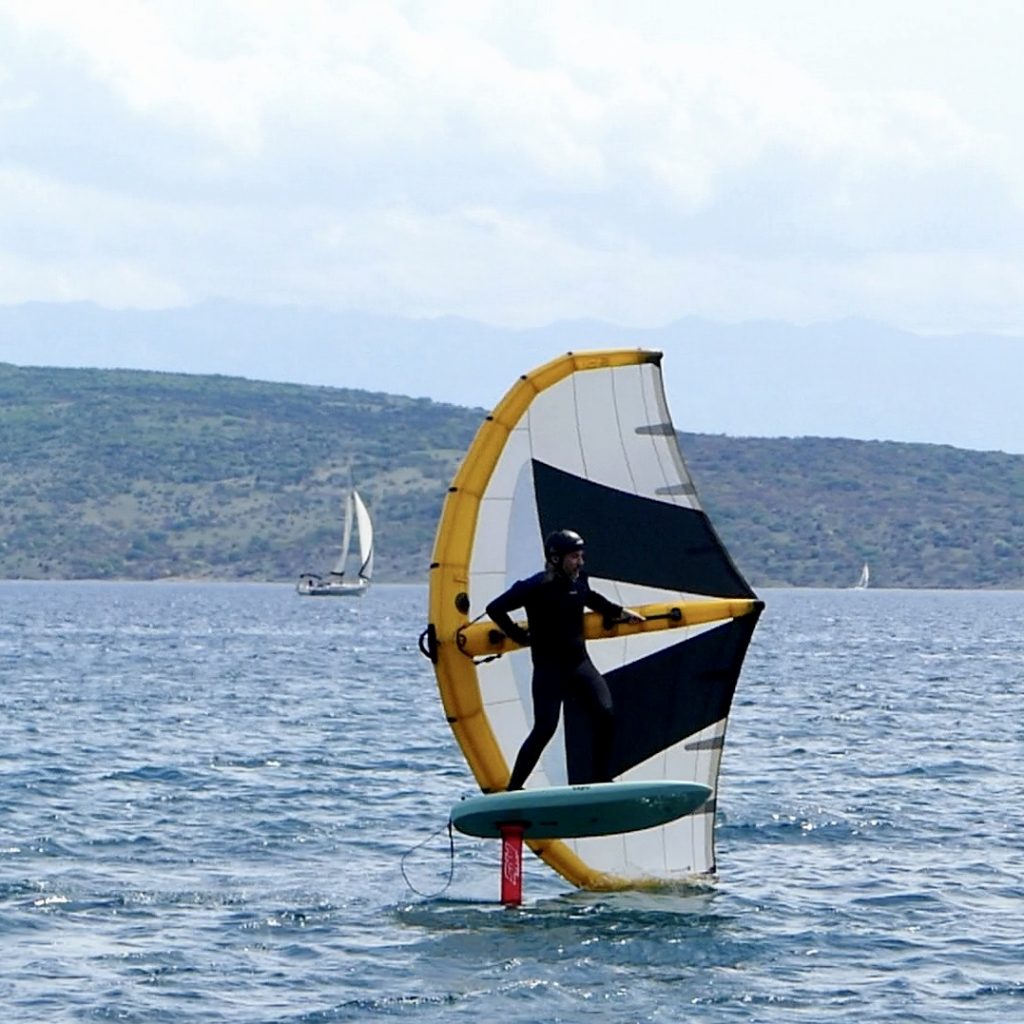
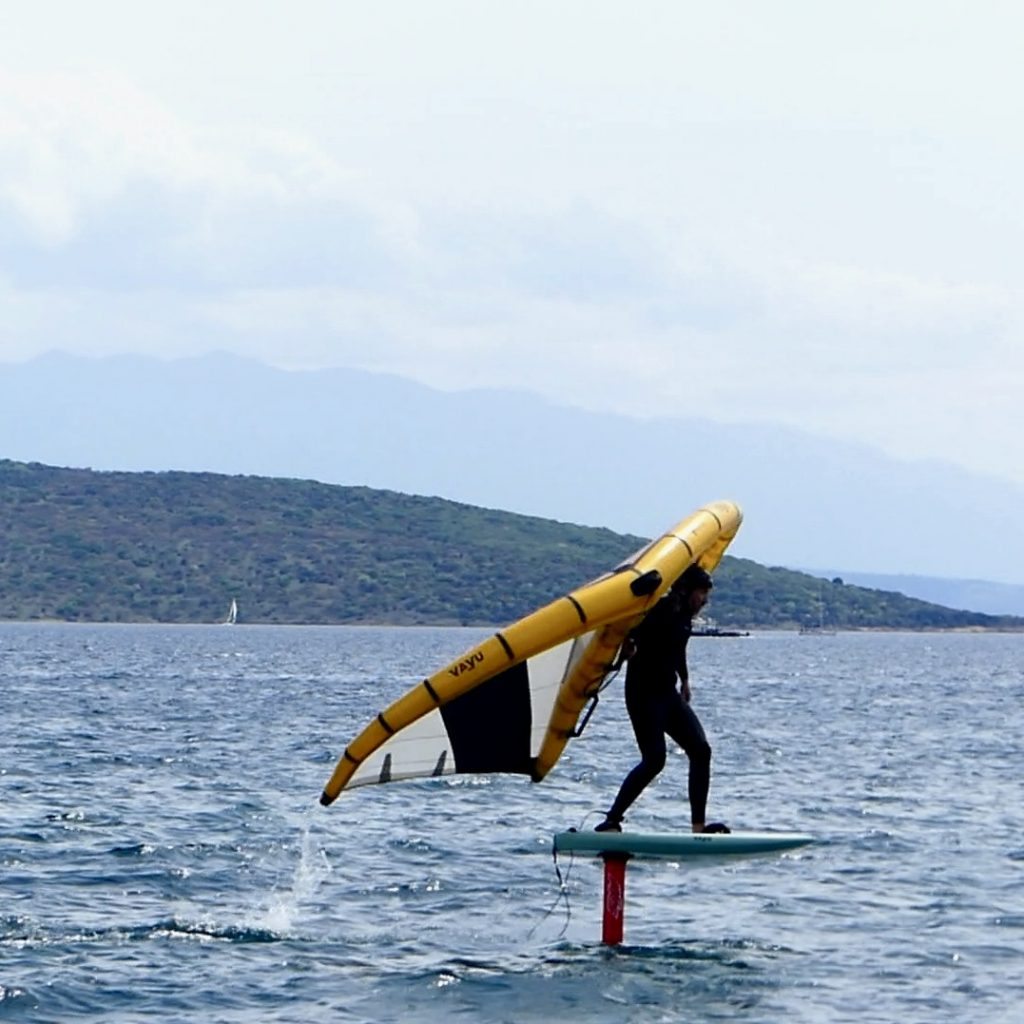
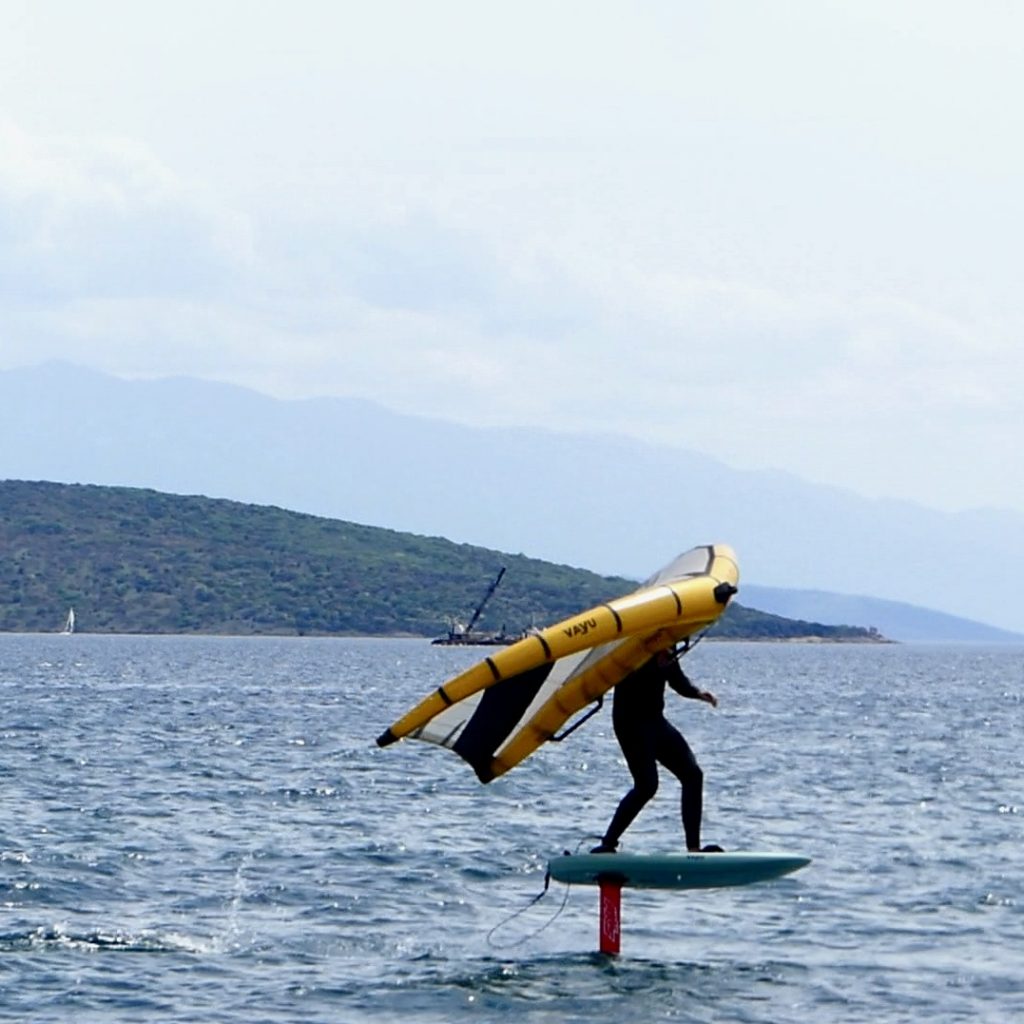
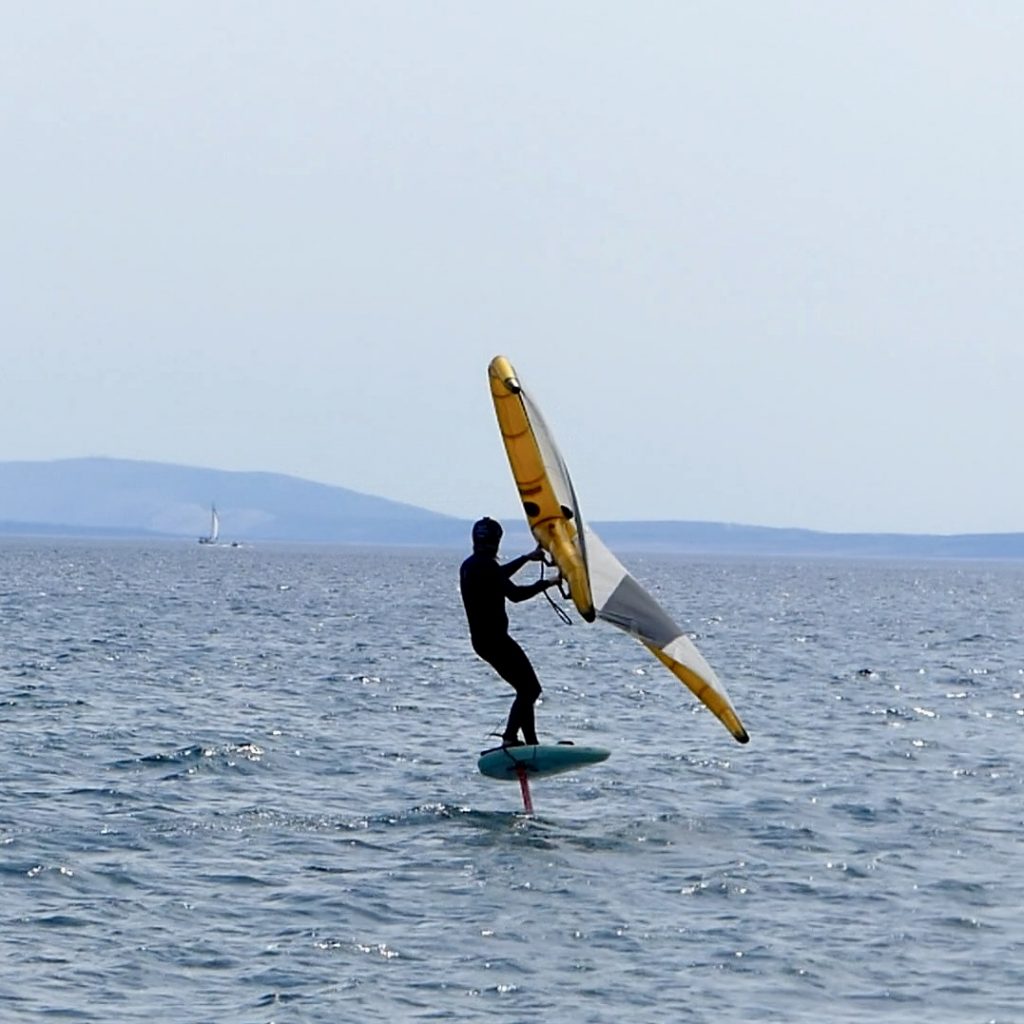
Tip
As with any jibe maneuver, when you are sailing downwind, you have little to no wind in your wing. At this point, you can do more or less whatever you want with the wing without the wind interfering. Being aware of this point and its effect will help you reduce a lot of personal (time) stress.
If, for example, you have not yet completed the wing pass, even though you should already be sailing further around the curve radius, you can gain more time to complete the wing pass jibe by continuing to sail downwind.



